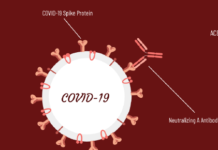by Brianna Ziegler and Austin Wilkerson; Farnsley Middle School (Louisville, KY)
When my mom was pregnant with me (Brianna), she had high blood pressure, severe headaches, and abdominal pain. She was vomiting, her vision was blurry, and her face and hands were swollen. 
According to the Mayo Clinic, these are symptoms of preeclampsia. Although preeclampsia doesn’t affect many women’s pregnancies, some cases can be serious. Preeclampsia may end up in resulting in induced labor.
It was one of the scariest moments of her life, says Brianna’s mom, Michelle. “We [her and her boyfriend] were scared that our baby may not make it.” Minutes before Brianna’s birth, “All of a sudden, my blood pressure went through the roof and my baby’s heart rate dropped. Next thing I knew I was rushed in for an emergency C- section.”
Preeclampsia is a pregnancy problem that happens when you have high blood pressure and signs of damage to another organ’s system, often the kidney. Preeclampsia usually begins 20 weeks into the pregnancy. Michelle didn’t have any of these risk factors until about a month before Brianna was born.
Not only can preeclampsia scare you, but, according to the Mayo Clinic, it may hurt the baby because preeclampsia affects the blood flow to the placenta. The placenta is a flat, circular organ in the uterus. The placenta gives the baby the nutrients it needs to survive. When the placenta doesn’t receive enough blood, the baby may start to lack oxygen and nutrients. This can result in premature birth, low birth rate—both of which Brianna had when she was born—and slow growth. It can also result in having breathing problems. Preeclampsia can also cause heavy bleeding or damage to the placenta, which is known as placental abruption.
Brianna was born seven and a half weeks early and was on a ventilator for several days after. She now has asthma and had a heart murmur.
Although the cause of preeclampsia is unknown, there are certain risk factors. According to the Mayo Clinic, these risk factors are a first pregnancy, being older than 40, obesity, carrying more than one child at a time (twins, triplets, etc.), and having a family member that has had it before. This was Michelle’s first pregnancy and she was obese.
According to babycenter.com, an educational website, preeclampsia typically occurs on your second or third trimester (after 20 weeks). Thankfully, only 5–8% of all pregnancies are affected.
If preeclampsia isn’t treated, the mother could get eclampsia, which is basically the same thing as preeclampsia but includes seizures. With eclampsia, chances are the baby will be delivered early. This is because it’s life threatening.
A mother that gets preeclampsia is also at a higher risk for cardiovascular disease in the future. Cardiovascular disease is a disease that involves the heart and blood vessels. According to the Mayo Clinic, in order to lower risks keep your weight down, exercise daily, don’t smoke, and eat fruits and vegetables. Michelle did not get cardiovascular disease.
If you suspect preeclampsia, you need to go to the doctor. The doctor will prescribe you medication to lower your blood pressure. He/she will also give you corticosteroids medication. The Mayo Clinic states, “Corticosteroid medication can temporarily improve liver and platelet function to help prolong your pregnancy.”
According to the National Center of Biotechnology Information, the corticosteroids “travels to the baby’s body and lungs, through their bloodstream.” In 48 hours, it can improve the baby’s lungs by speeding up the development. This can help a premature baby. With severe preeclampsia, the doctors might give medicine to prevent seizures. Brianna Ziegler and Austin Wilkerson

This work is licensed under a Creative Commons Attribution-NonCommercial-NoDerivs 3.0 Unported License














My mom was effected with this when she was pregnant with me, and then my sister. I was born as a Jondus baby (excuse the misspelling) and she has commented how she was on bedrest for several months before my birth and the placenta I was in was a black/grey colour. She had an induced birth with me and I weighed in at a mere 5lbs 4oz and I was 19in at 34 weeks into my mom’s pregnancy. I love this article because they had their work cut out for them and they did a spectacular job!:gamba